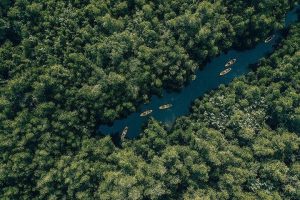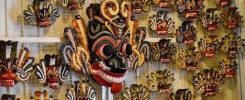Madu River Safari
The Madu River, nestled near the picturesque town of Balapitiya on the Colombo-Galle highway, is a veritable gem of natural wonder. It’s a place where the river Madu gracefully meets the ocean, creating a mesmerizing wetland landscape, replete with a myriad of islands. Local hotels offer enchanting boat rides along the winding canals at affordable rates, and there is no shortage of charming places to dine and savor the flavors of the region.
Embarking on a Madu River boat ride or safari is an absolute must when visiting the stunning island of Sri Lanka, particularly in the enchanting Down South region.
The Madu Ganga, or Madu River, is a precious and delicate ecosystem, situated just south of the coastal haven of Bentota and approximately 70 kilometers from the bustling Colombo City. Its accessibility is effortless, as it lies adjacent to one of Sri Lanka’s busiest thoroughfares, the Galle-Colombo main road.
This natural marvel holds the distinguished title of a Ramsar wetland and stands as the second-largest wetland in Sri Lanka. Encompassing 28 islands, some of which are inhabited by locals, the Madu River estuary is a sprawling 915-hectare wonder. This haven harbors a multitude of biodiversity ecosystems and is nourished by seven tributaries, serving as the primary water source for the wetland. Recognized as a national sanctuary since 2006, the Madu River is a testament to nature’s pristine beauty.
The biodiversity within the Madu Ganga is nothing short of astonishing:
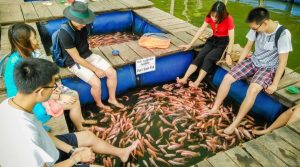 Sri Lanka, with its diverse forests, showcases riparian vegetation that holds a special place among the island’s ecosystems. The Madu River safari and boat ride provide an opportunity to immerse yourself in one of Sri Lanka’s most iconic river forests.
The Madu Ganga, or Madu River, is not only the second-largest wetland in Sri Lanka but also a highlight of many road trips on the island. It holds the distinction of being the only Ramsar wetland in the region. Among all the riparian forests in Sri Lanka, the Madu River stands as the most prevalent riverine vegetation, making a Madu River Boat Ride or Safari an essential experience for tourists exploring the western and southern coastal resort towns of Sri Lanka.
Sri Lanka, with its diverse forests, showcases riparian vegetation that holds a special place among the island’s ecosystems. The Madu River safari and boat ride provide an opportunity to immerse yourself in one of Sri Lanka’s most iconic river forests.
The Madu Ganga, or Madu River, is not only the second-largest wetland in Sri Lanka but also a highlight of many road trips on the island. It holds the distinction of being the only Ramsar wetland in the region. Among all the riparian forests in Sri Lanka, the Madu River stands as the most prevalent riverine vegetation, making a Madu River Boat Ride or Safari an essential experience for tourists exploring the western and southern coastal resort towns of Sri Lanka.
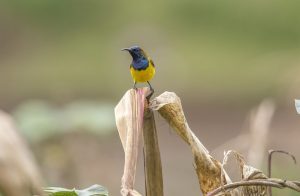 Pricing for a Madu River boat ride or safari in Sri Lanka is divided into two categories:
Pricing for a Madu River boat ride or safari in Sri Lanka is divided into two categories:
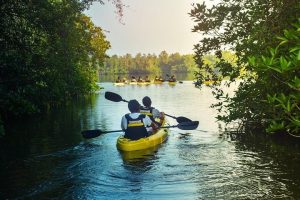 What truly sets the Madu River safaris and boat rides apart are the islands and their intriguing stories. Despite the majority of the area being covered by wetlands, it is the islands that add a unique charm to the experience. History tells us that there were once 64 islands in the Madu River, but today, only 28 remain visible, with 15 boasting substantial land areas. During your Madu River safari in Balapitiya, you’ll have the opportunity to witness these captivating attractions and immerse yourself in the area’s rich history.
For the locals, the cinnamon industry plays a vital role in the region’s economy. This offers visitors a chance to purchase some of the world’s finest cinnamon at favorable prices. Sri Lanka is renowned for producing top-quality cinnamon, and this is your opportunity to acquire the very best. Those not involved in cinnamon production find their livelihoods in fishing or serving as knowledgeable boat guides. Local fishermen employ various techniques, including perching on tall trees in the water or deploying nets between poles to capture their prey.
While many of the islands in the Madu River are habitable, they are predominantly covered by lush trees and shrubs. Among the inhabited islands, ‘Koth Duwa’ houses a historic Buddhist temple dating back to the reign of early Sri Lankan kings. Additionally, two other islands, King Dhathusena and King Mugalan, hold historical significance as havens for these monarchs.
What truly sets the Madu River safaris and boat rides apart are the islands and their intriguing stories. Despite the majority of the area being covered by wetlands, it is the islands that add a unique charm to the experience. History tells us that there were once 64 islands in the Madu River, but today, only 28 remain visible, with 15 boasting substantial land areas. During your Madu River safari in Balapitiya, you’ll have the opportunity to witness these captivating attractions and immerse yourself in the area’s rich history.
For the locals, the cinnamon industry plays a vital role in the region’s economy. This offers visitors a chance to purchase some of the world’s finest cinnamon at favorable prices. Sri Lanka is renowned for producing top-quality cinnamon, and this is your opportunity to acquire the very best. Those not involved in cinnamon production find their livelihoods in fishing or serving as knowledgeable boat guides. Local fishermen employ various techniques, including perching on tall trees in the water or deploying nets between poles to capture their prey.
While many of the islands in the Madu River are habitable, they are predominantly covered by lush trees and shrubs. Among the inhabited islands, ‘Koth Duwa’ houses a historic Buddhist temple dating back to the reign of early Sri Lankan kings. Additionally, two other islands, King Dhathusena and King Mugalan, hold historical significance as havens for these monarchs.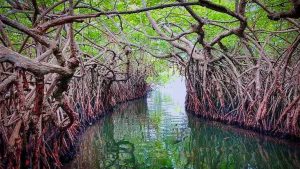 Adding to the unique experiences available in the area is the opportunity for an open-air fish massage. This novel activity, popular worldwide, is particularly unique because the fish are in their natural aquatic environment. A spacious area is cordoned off with nets between poles, ensuring that the fish remain within the designated space. Visitors can sit on benches and immerse their feet in the water for a relaxing and rejuvenating experience.
The Madu Ganga River Safari allows you to delve into the enchanting world of mangroves and their ecological significance. The region near the water source primarily consists of swampy marshlands adorned with mangrove trees, spanning over 61 hectares or more than 150 acres. Here, you can find 14 out of the 24 known mangrove species, which play a crucial role in preventing erosion. These mangroves proved their worth during the devastating tsunami of December 2004 by acting as a natural barrier, safeguarding the region.
The robust growth of mangroves creates a chain of ecological benefits, with the fertile soil supporting the abundant growth of various wetland species. Over 300 species, including 19 endangered ones, have been discovered so far, making the area a treasure trove for biologists and ecologists, harboring many undiscovered species in the depths of the mangrove forests. These mangroves also provide vital support to numerous species that depend on them.
Adding to the unique experiences available in the area is the opportunity for an open-air fish massage. This novel activity, popular worldwide, is particularly unique because the fish are in their natural aquatic environment. A spacious area is cordoned off with nets between poles, ensuring that the fish remain within the designated space. Visitors can sit on benches and immerse their feet in the water for a relaxing and rejuvenating experience.
The Madu Ganga River Safari allows you to delve into the enchanting world of mangroves and their ecological significance. The region near the water source primarily consists of swampy marshlands adorned with mangrove trees, spanning over 61 hectares or more than 150 acres. Here, you can find 14 out of the 24 known mangrove species, which play a crucial role in preventing erosion. These mangroves proved their worth during the devastating tsunami of December 2004 by acting as a natural barrier, safeguarding the region.
The robust growth of mangroves creates a chain of ecological benefits, with the fertile soil supporting the abundant growth of various wetland species. Over 300 species, including 19 endangered ones, have been discovered so far, making the area a treasure trove for biologists and ecologists, harboring many undiscovered species in the depths of the mangrove forests. These mangroves also provide vital support to numerous species that depend on them.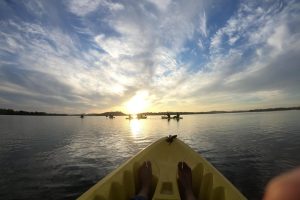 The area is home to diverse wildlife, including the majestic wild boar, as well as smaller creatures like chimpanzees and various squirrel species. Bird enthusiasts will be delighted by the sight of cormorants and kingfishers, and the mangrove forests offer a dream-come-true for avid birdwatchers with over 111 bird species to spot. The region boasts 31 types of reptiles, including snakes, lizards, and crocodiles, adding to its ecological richness. Additionally, there are over 50 species of butterflies and 25 types of mollusks to be found in the Madu River region.
The area is home to diverse wildlife, including the majestic wild boar, as well as smaller creatures like chimpanzees and various squirrel species. Bird enthusiasts will be delighted by the sight of cormorants and kingfishers, and the mangrove forests offer a dream-come-true for avid birdwatchers with over 111 bird species to spot. The region boasts 31 types of reptiles, including snakes, lizards, and crocodiles, adding to its ecological richness. Additionally, there are over 50 species of butterflies and 25 types of mollusks to be found in the Madu River region.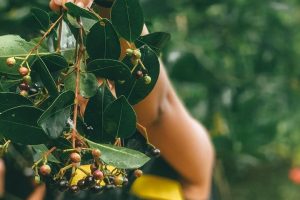 Our team is dedicated to crafting personalized tour packages that include the Madu River boat safaris, allowing you to customize your experience until it perfectly aligns with your preferences. You can also explore our existing inspiration packages, all of which can be tailored to meet your unique needs and desires. A journey along the Madu River is not just a boat ride; it’s an enchanting voyage through nature’s beauty and a glimpse into the rich tapestry of Sri Lanka’s culture and history.
Our team is dedicated to crafting personalized tour packages that include the Madu River boat safaris, allowing you to customize your experience until it perfectly aligns with your preferences. You can also explore our existing inspiration packages, all of which can be tailored to meet your unique needs and desires. A journey along the Madu River is not just a boat ride; it’s an enchanting voyage through nature’s beauty and a glimpse into the rich tapestry of Sri Lanka’s culture and history.
- 70 diverse fish species
- 31 varieties of reptiles
- 11 species of freshwater mollusks
- 14 land-dwelling mollusk species
- 247 unique animal species
- 14 distinct types of mangroves, out of the 24 found in the country
- 50 species of butterflies
- A staggering 111 bird species
 Sri Lanka, with its diverse forests, showcases riparian vegetation that holds a special place among the island’s ecosystems. The Madu River safari and boat ride provide an opportunity to immerse yourself in one of Sri Lanka’s most iconic river forests.
The Madu Ganga, or Madu River, is not only the second-largest wetland in Sri Lanka but also a highlight of many road trips on the island. It holds the distinction of being the only Ramsar wetland in the region. Among all the riparian forests in Sri Lanka, the Madu River stands as the most prevalent riverine vegetation, making a Madu River Boat Ride or Safari an essential experience for tourists exploring the western and southern coastal resort towns of Sri Lanka.
Sri Lanka, with its diverse forests, showcases riparian vegetation that holds a special place among the island’s ecosystems. The Madu River safari and boat ride provide an opportunity to immerse yourself in one of Sri Lanka’s most iconic river forests.
The Madu Ganga, or Madu River, is not only the second-largest wetland in Sri Lanka but also a highlight of many road trips on the island. It holds the distinction of being the only Ramsar wetland in the region. Among all the riparian forests in Sri Lanka, the Madu River stands as the most prevalent riverine vegetation, making a Madu River Boat Ride or Safari an essential experience for tourists exploring the western and southern coastal resort towns of Sri Lanka.
 Pricing for a Madu River boat ride or safari in Sri Lanka is divided into two categories:
Pricing for a Madu River boat ride or safari in Sri Lanka is divided into two categories:
- Price per person
- Price per boat
 What truly sets the Madu River safaris and boat rides apart are the islands and their intriguing stories. Despite the majority of the area being covered by wetlands, it is the islands that add a unique charm to the experience. History tells us that there were once 64 islands in the Madu River, but today, only 28 remain visible, with 15 boasting substantial land areas. During your Madu River safari in Balapitiya, you’ll have the opportunity to witness these captivating attractions and immerse yourself in the area’s rich history.
For the locals, the cinnamon industry plays a vital role in the region’s economy. This offers visitors a chance to purchase some of the world’s finest cinnamon at favorable prices. Sri Lanka is renowned for producing top-quality cinnamon, and this is your opportunity to acquire the very best. Those not involved in cinnamon production find their livelihoods in fishing or serving as knowledgeable boat guides. Local fishermen employ various techniques, including perching on tall trees in the water or deploying nets between poles to capture their prey.
While many of the islands in the Madu River are habitable, they are predominantly covered by lush trees and shrubs. Among the inhabited islands, ‘Koth Duwa’ houses a historic Buddhist temple dating back to the reign of early Sri Lankan kings. Additionally, two other islands, King Dhathusena and King Mugalan, hold historical significance as havens for these monarchs.
What truly sets the Madu River safaris and boat rides apart are the islands and their intriguing stories. Despite the majority of the area being covered by wetlands, it is the islands that add a unique charm to the experience. History tells us that there were once 64 islands in the Madu River, but today, only 28 remain visible, with 15 boasting substantial land areas. During your Madu River safari in Balapitiya, you’ll have the opportunity to witness these captivating attractions and immerse yourself in the area’s rich history.
For the locals, the cinnamon industry plays a vital role in the region’s economy. This offers visitors a chance to purchase some of the world’s finest cinnamon at favorable prices. Sri Lanka is renowned for producing top-quality cinnamon, and this is your opportunity to acquire the very best. Those not involved in cinnamon production find their livelihoods in fishing or serving as knowledgeable boat guides. Local fishermen employ various techniques, including perching on tall trees in the water or deploying nets between poles to capture their prey.
While many of the islands in the Madu River are habitable, they are predominantly covered by lush trees and shrubs. Among the inhabited islands, ‘Koth Duwa’ houses a historic Buddhist temple dating back to the reign of early Sri Lankan kings. Additionally, two other islands, King Dhathusena and King Mugalan, hold historical significance as havens for these monarchs. Adding to the unique experiences available in the area is the opportunity for an open-air fish massage. This novel activity, popular worldwide, is particularly unique because the fish are in their natural aquatic environment. A spacious area is cordoned off with nets between poles, ensuring that the fish remain within the designated space. Visitors can sit on benches and immerse their feet in the water for a relaxing and rejuvenating experience.
The Madu Ganga River Safari allows you to delve into the enchanting world of mangroves and their ecological significance. The region near the water source primarily consists of swampy marshlands adorned with mangrove trees, spanning over 61 hectares or more than 150 acres. Here, you can find 14 out of the 24 known mangrove species, which play a crucial role in preventing erosion. These mangroves proved their worth during the devastating tsunami of December 2004 by acting as a natural barrier, safeguarding the region.
The robust growth of mangroves creates a chain of ecological benefits, with the fertile soil supporting the abundant growth of various wetland species. Over 300 species, including 19 endangered ones, have been discovered so far, making the area a treasure trove for biologists and ecologists, harboring many undiscovered species in the depths of the mangrove forests. These mangroves also provide vital support to numerous species that depend on them.
Adding to the unique experiences available in the area is the opportunity for an open-air fish massage. This novel activity, popular worldwide, is particularly unique because the fish are in their natural aquatic environment. A spacious area is cordoned off with nets between poles, ensuring that the fish remain within the designated space. Visitors can sit on benches and immerse their feet in the water for a relaxing and rejuvenating experience.
The Madu Ganga River Safari allows you to delve into the enchanting world of mangroves and their ecological significance. The region near the water source primarily consists of swampy marshlands adorned with mangrove trees, spanning over 61 hectares or more than 150 acres. Here, you can find 14 out of the 24 known mangrove species, which play a crucial role in preventing erosion. These mangroves proved their worth during the devastating tsunami of December 2004 by acting as a natural barrier, safeguarding the region.
The robust growth of mangroves creates a chain of ecological benefits, with the fertile soil supporting the abundant growth of various wetland species. Over 300 species, including 19 endangered ones, have been discovered so far, making the area a treasure trove for biologists and ecologists, harboring many undiscovered species in the depths of the mangrove forests. These mangroves also provide vital support to numerous species that depend on them. The area is home to diverse wildlife, including the majestic wild boar, as well as smaller creatures like chimpanzees and various squirrel species. Bird enthusiasts will be delighted by the sight of cormorants and kingfishers, and the mangrove forests offer a dream-come-true for avid birdwatchers with over 111 bird species to spot. The region boasts 31 types of reptiles, including snakes, lizards, and crocodiles, adding to its ecological richness. Additionally, there are over 50 species of butterflies and 25 types of mollusks to be found in the Madu River region.
The area is home to diverse wildlife, including the majestic wild boar, as well as smaller creatures like chimpanzees and various squirrel species. Bird enthusiasts will be delighted by the sight of cormorants and kingfishers, and the mangrove forests offer a dream-come-true for avid birdwatchers with over 111 bird species to spot. The region boasts 31 types of reptiles, including snakes, lizards, and crocodiles, adding to its ecological richness. Additionally, there are over 50 species of butterflies and 25 types of mollusks to be found in the Madu River region. Our team is dedicated to crafting personalized tour packages that include the Madu River boat safaris, allowing you to customize your experience until it perfectly aligns with your preferences. You can also explore our existing inspiration packages, all of which can be tailored to meet your unique needs and desires. A journey along the Madu River is not just a boat ride; it’s an enchanting voyage through nature’s beauty and a glimpse into the rich tapestry of Sri Lanka’s culture and history.
Our team is dedicated to crafting personalized tour packages that include the Madu River boat safaris, allowing you to customize your experience until it perfectly aligns with your preferences. You can also explore our existing inspiration packages, all of which can be tailored to meet your unique needs and desires. A journey along the Madu River is not just a boat ride; it’s an enchanting voyage through nature’s beauty and a glimpse into the rich tapestry of Sri Lanka’s culture and history. 
